Based on a prototype from the late 1960s, the Tudor Black Bay P01 reveals a little-known aspect of the brand’s history. In this feature from the WatchTime archives, we tested the current serial model.

History tells us that Tudor supplied the U.S. Navy with divers’ watches as early as the late 1950s. But Reference 7922 wasn’t introduced until 1964 and is considered to be the first dive watch from Tudor. It was water resistant to 100 meters.
“Commando” Was the Codename for a Special Bezel System
Three years later, the Swiss brand began developing a highly functional watch to replace the Oyster Prince Submariner Reference 7928, which was the Navy’s standard watch at that time. The first phase of development led to various prototypes and a patent for an unprecedented function. The ambitious project with the codename “Commando” was never realized, but the plans were carefully preserved in the company’s archives. The novel component was a hinged mechanism on the case that could be unlocked to reset the bezel and locked to secure the bezel in place. Patented in 1968, the hinged mechanism was also intended to simplify maintenance and servicing.
The Black Bay P01 of 2019 (P01 stands for Prototype No. 1) incorporates this system, but not in its complete functionality. It’s primarily based on the locking mechanism, which lets the wearer secure the Black Bay P01’s bidirectional rotatable bezel by operating the hinged mechanism between the strap lugs at the 12. The rotatable bezel can theoretically be used as a divers’ bezel, although the ring wasn’t designed for this purpose. Calibrated for 12 hours with half-hour subdivisions, the bezel clicks into place in 60 increments, i.e., in single-minute steps, and it does so very crisply and accurately in response to slight downward pressure. But users who want to read elapsed time can only read it every minute at 5-minute intervals and the start of a time span.

Here’s how to use the bezel of the Black Bay P01. If you want to measure a short time span, like a brief jog through the park, simply rotate the bezel until its non-luminous triangular marker is opposite the tip of the minutes hand. To read the elapsed time, you’ll need to mentally convert the hour markings on the bezel into 5-minute increments. For a longer interval, like a bike ride or a hike in the mountains, turn the bezel until the triangular marker is opposite the tip of the hour hand. In the same way, the bezel can be used to set a second time zone. In this case, set the corresponding hour marker on the bezel to the marker on the dial and the hour hand.
For any of these actions, raise the hinged mechanism by pressing down between the lugs at the 12. This frees the bezel so you can rotate it in either direction. The correct pressure point is marked on the hinged flap with small grooves. It can be folded back into the locked position by applying slight pressure to the bezel or against the steel connector on the bracelet. This prevents the system from remaining open on the wrist, which can lead to the bezel being accidentally adjusted. The moveable construction also ensures that the Black Bay P01 fits perfectly on every wrist, even though it’s almost 56 mm from strap lugs to strap lugs.
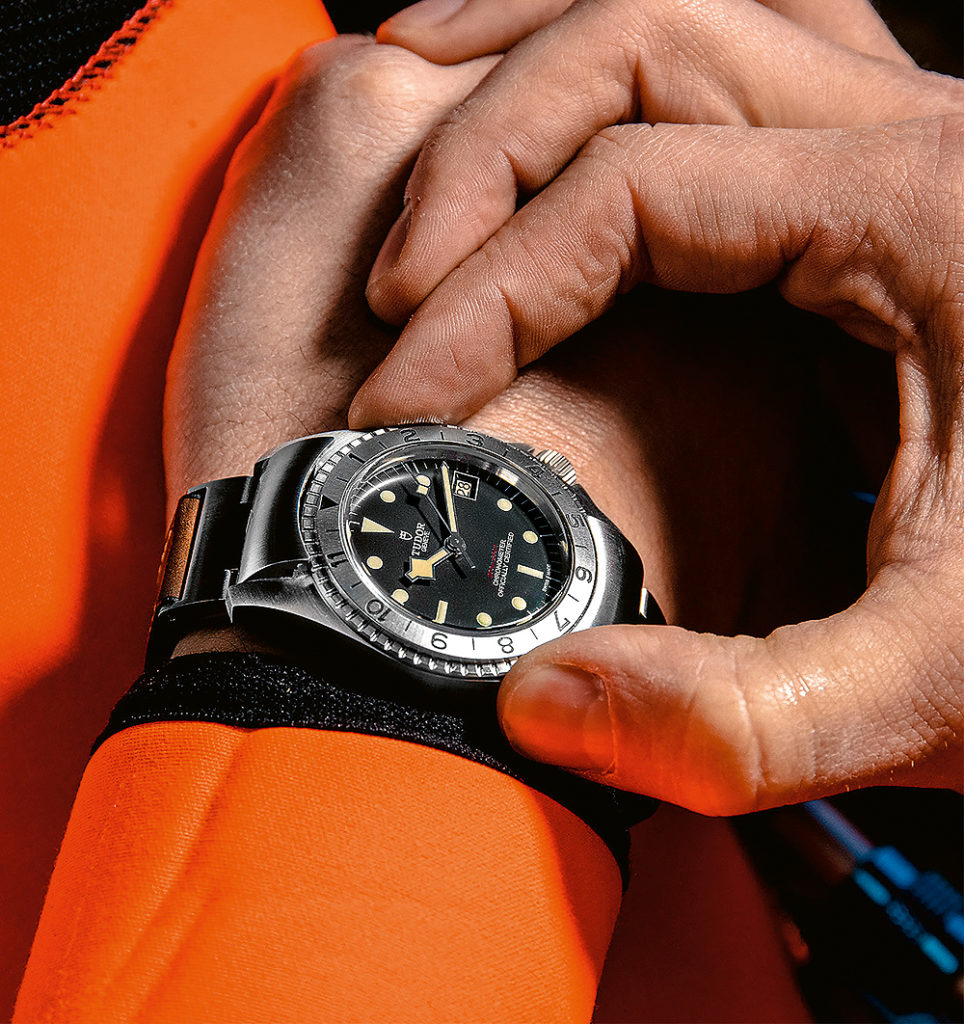
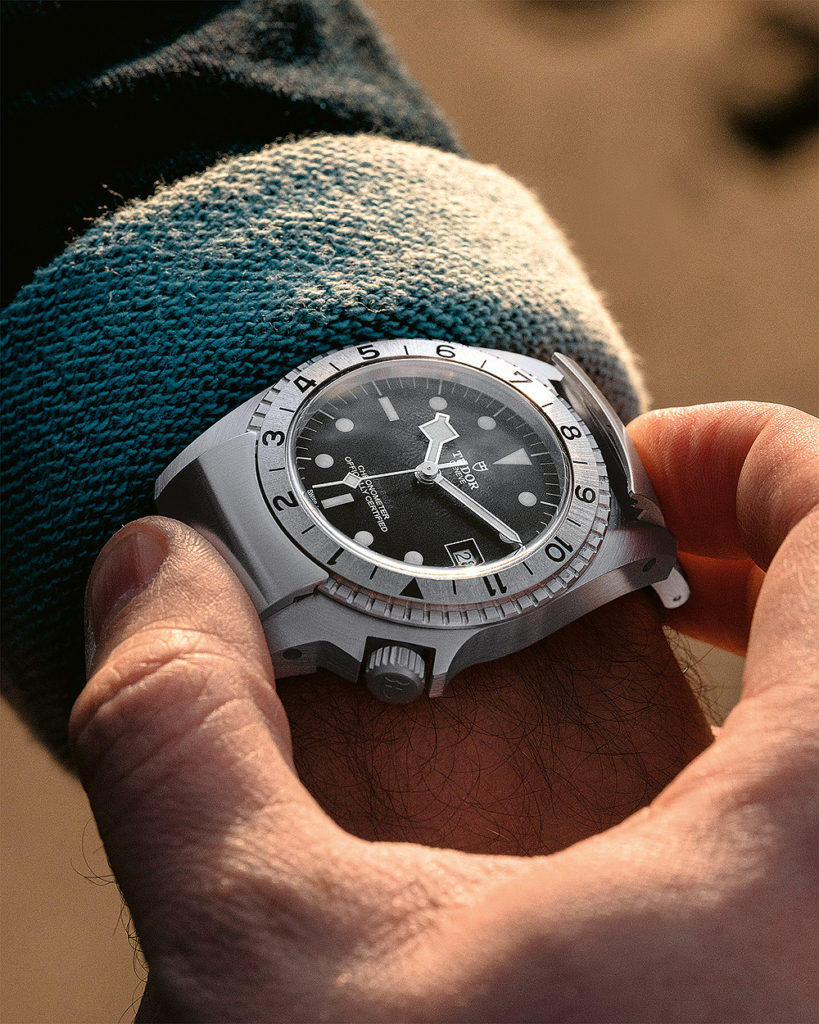
A Modern Movement Behind a Retro Facade
To minimize reflections, the stainless-steel housing is completely satin-finished. Its sporty angular design is slightly sharp-edged near the crown protector, and you can feel this sharpness when you wind the watch manually. To accomplish this task, first unscrew the knurled crown with the Tudor logo from its threaded connection and then turn it. Withdrawn to its middle position and then turned, the crown quickly adjusts the date display, which automatically advances shortly after midnight whenever the watch is running. The modern movement inside the case also allows the date indicator to be corrected at any desired time without jeopardizing the mechanism. This mechanism is no less up-to-date than the state-of-the-art 70-hour power reserve offered by automatic manufacture Caliber MT5612, which is housed behind an opaque screwed back and therefore unfortunately not visible.
The movement, which was originally custom-made for the Pelagos, is the first caliber ever developed by Tudor. It was introduced in 2015 and has been built and assembled in-house ever since. Conceived to tick inside the highly functional Pelagos divers’ watch, this caliber was designed with robustness, durability and reliability in mind. That’s why the large balance with variable inertia and a frequency of 4 Hz (28,800 vibrations per hour) oscillates under a sturdy bridge affixed at two points rather than under a conventional cantilevered balance cock screwed at only one point.

Furthermore, the balance oscillates together with a silicon hairspring, which is less sensitive than conventional balance springs to external physical influences such as temperature fluctuations, pressure changes, gravity and magnetism. The oscillating system, which is regulated via four screws on the balance wheel, consequently performs with solid chronometer-worthy rates, which we confirmed under laboratory conditions and in a wearing test conducted on the wrist for several weeks. When fully wound and measured on the electronic timing machine and on the wrist, the Black Bay P01 runs with almost no deviation. Its timekeeping strays very slightly into the “minus” column as the tension in its mainspring gradually decreases.
A Combination of Historical Aesthetics and Modern Watchmaking
The manufacture caliber is decorated in the typical style of the Tudor brand. The openworked rotor and the automatic bridge beneath it are satin finished. The plate and the other bridges alternate between polished and sandblasted surfaces and laser-etched details.
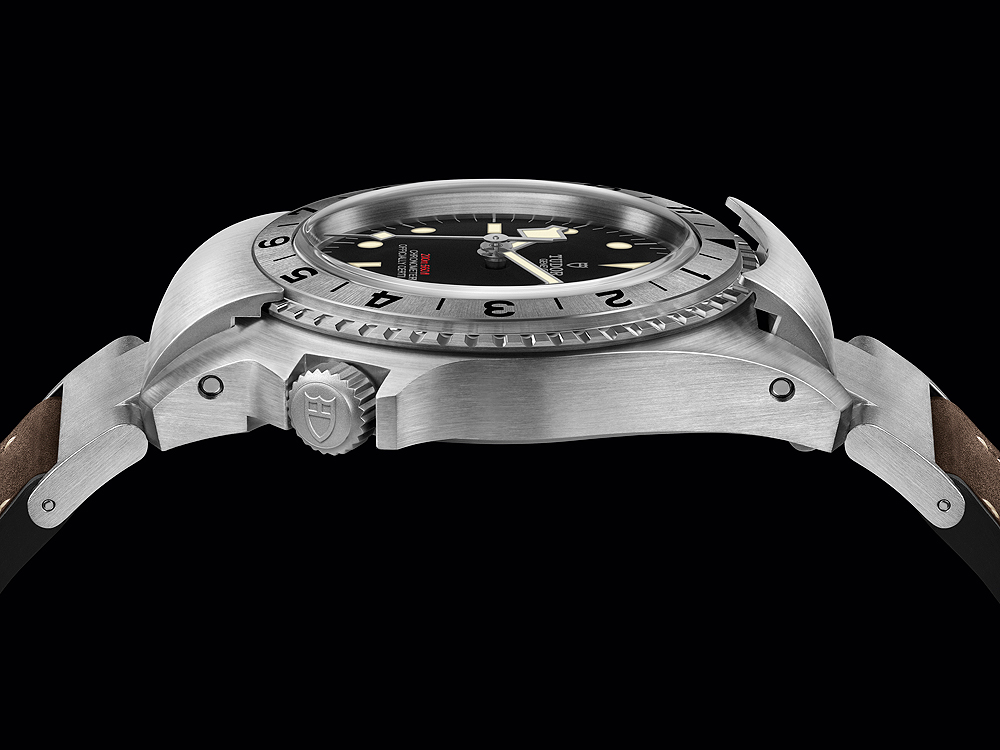
Caliber MT5612 indicates the hours, minutes and seconds from the center of the matte black, slightly curved dial. As with all other models in the Black Bay line, the P01 has adopted the characteristic, angular “snowflake” hands, which first appeared in the brand’s catalog in 1969. Together with luminous and variously shaped indexes, the hands guarantee bold contrasts and excellent legibility in both good and poor lighting conditions. The well-chosen light beige color of the luminous material, which is also used on the date disk, underscores this new model’s connection to its history. Thanks to this combination of historical and modern aesthetic codes, the P01 fits perfectly into the Black Bay line, which is much more than a series of identical new editions of models from the past.
The snowflake motif also appears on the underside of the strap, which was developed exclusively for the Black Bay P01. The strap is a rubber-based combination with an element made of brown leather on top. It displays retro charm thanks to its pale contrasting stitching, and the movable lugs more than symbolically establish the connection to the original prototype.
A Collector’s Item That’s Good for Everyday Use
It’s not only with this detail that the Black Bay P01 pays homage to the historical research project. In the final analysis, this isn’t a dive watch, even though its prototype was originally designed for divers. With a pressure resistance to 20 bar, a modern movement, a bezel with extraordinary styling and unconventional functionality, it is undoubtedly an unusual, robust sports and outdoors watch. These virtues make it interesting not only for aficionados and collectors of special timepieces, but also for those who want a practical watch for daily use.
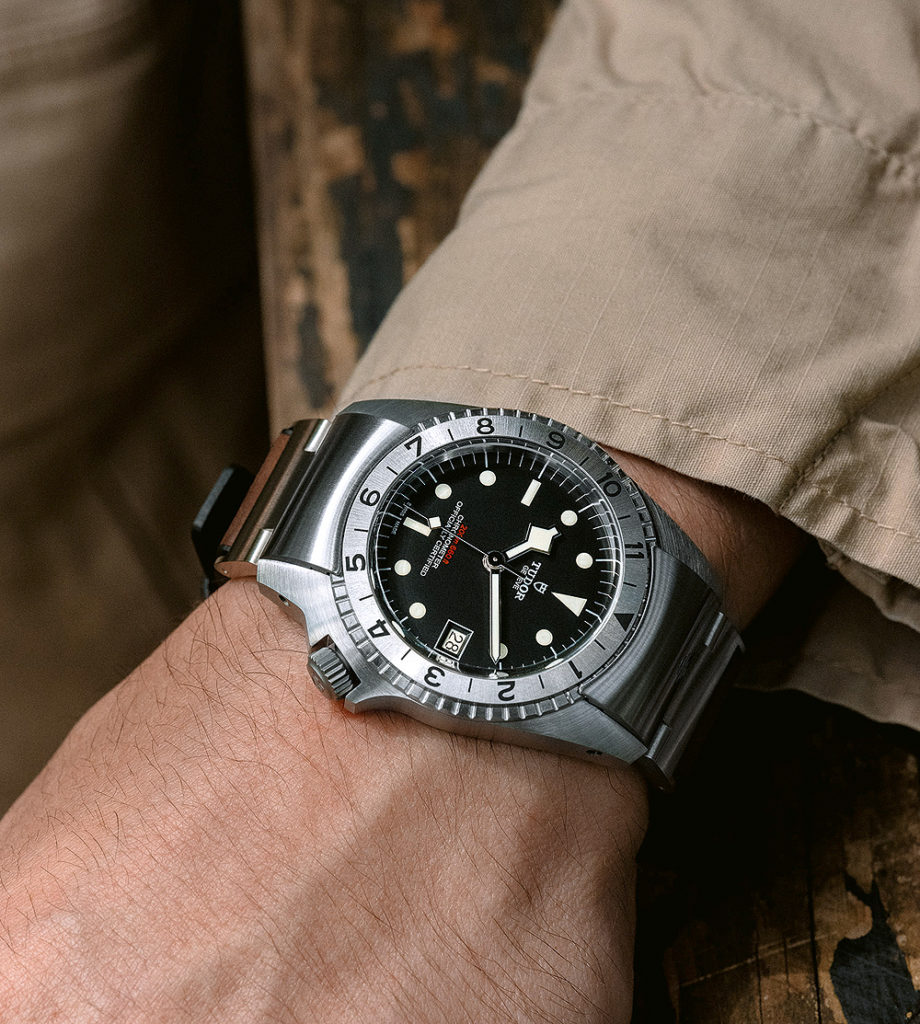
SPECS:
Manufacturer: Montres Tudor SA, Rue François-Dussaud 3-7, 1211, Geneva 26, Switzerland
Reference number: 70150
Functions: Hours, minutes, central seconds, date display, bidirectional rotatable bezel that clicks into place in 60 increments and is calibrated for 12 hours, locking bezel system via a moveable hinged component at 12 o’clock
Movement: Manufacture Caliber MT5612, automatic, COSC certified, 28,800 vph, 26 jewels, silicon hairspring, Glucydur balance, Incabloc shock absorber, fine adjustment using screws on the balance, approx. 70-hour power reserve, diameter = 31.8 mm, height = 6.50 mm
Case: Stainless steel, curved sapphire crystal above the dial, solid caseback, water resistant to 200 m
Strap and clasp: Hybrid leather and rubber strap, integrated Tudor system single folding stainless-steel deployant clasp with safety catch
Rate results (Deviation in seconds per 24 hours, fully wound/after 24 hours):
On the wrist +0.4
Dial up +2.6 / +3.1
Dial down +1.3 / +1.1
Crown up +1.8 / -1.7
Crown down -1.2 / -2.9
Crown left +0.8 / -0.4
Greatest deviation 3.8 / 6.0
Average deviation +1.1 / -0.2
Average amplitude:
Flat positions 293° / 287°
Hanging positions 253° / 238°
Dimensions: Diameter = 41.98 mm, height = 14.56 mm, weight = 154.0 grams
Price: $4,000

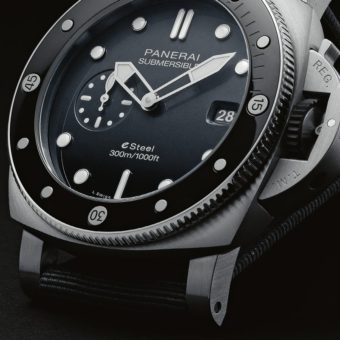
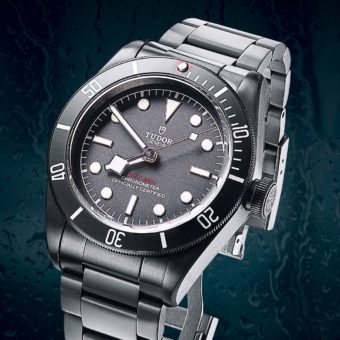

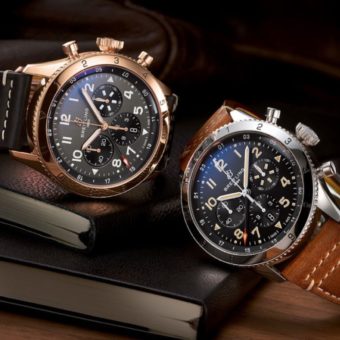
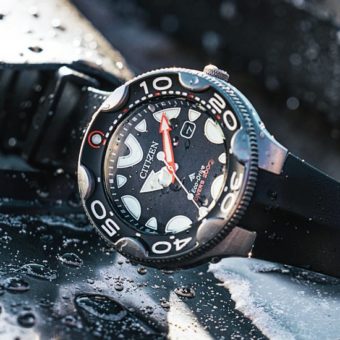
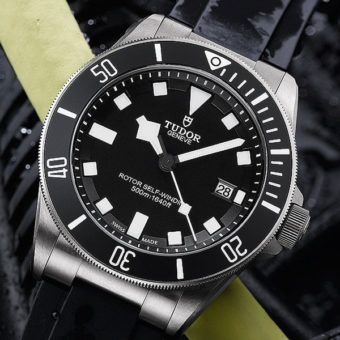
A dial only a mother could love…
O&W vibes.
Strange mechanism. Could be fun.
I had the P01 for a short while but decided to trade for the BB bronze. The P01 was very uncomfortable to wear and I wish there was a commando around because it looks a lot better. Like the strap on the Commando, fits the watch better
Like it, easy to read and wear…..
I collected about 6 Tudor watches now. This design is something I cannot accept or buy. What happen to you Tudor?
The more I wear this watch the more I Love it. I talked a frend into buying one when he has his on your eye is drawn to it it’s so unusual.
This is my favorite watch in my collection, it has this cool steampunk look to it that I’m draw too. Its not for everyone but to me this is the Tudor watch to own .
I own this watch and truly love it. Precise, durable, and wonderfully unique. Wears especially well on a bund strap. The P01 has become my daily-wear watch.
It’s funny. It ‘was’ the Navy’s standard issue….wonder if the can afford a Casio now…so many things were then and are not now. Luxury watches for you
I really like Tudors….I do. This design, to me, is unfortunate. Its always nice to present something new to the masses, but the time for this one…maybe has not come. The word that comes to mind is…..”wonky.”
While the current iteration of this watch is technologically advanced, particularly at this price point, I nevertheless find the older Commando prototype more appealing to the eye. They are quite different watches with seemingly distinctly different potential purchasers-I am probably showing my advanced age. I’ve never owned a Tudor but the versatility factor and test numbers are undeniably notable.